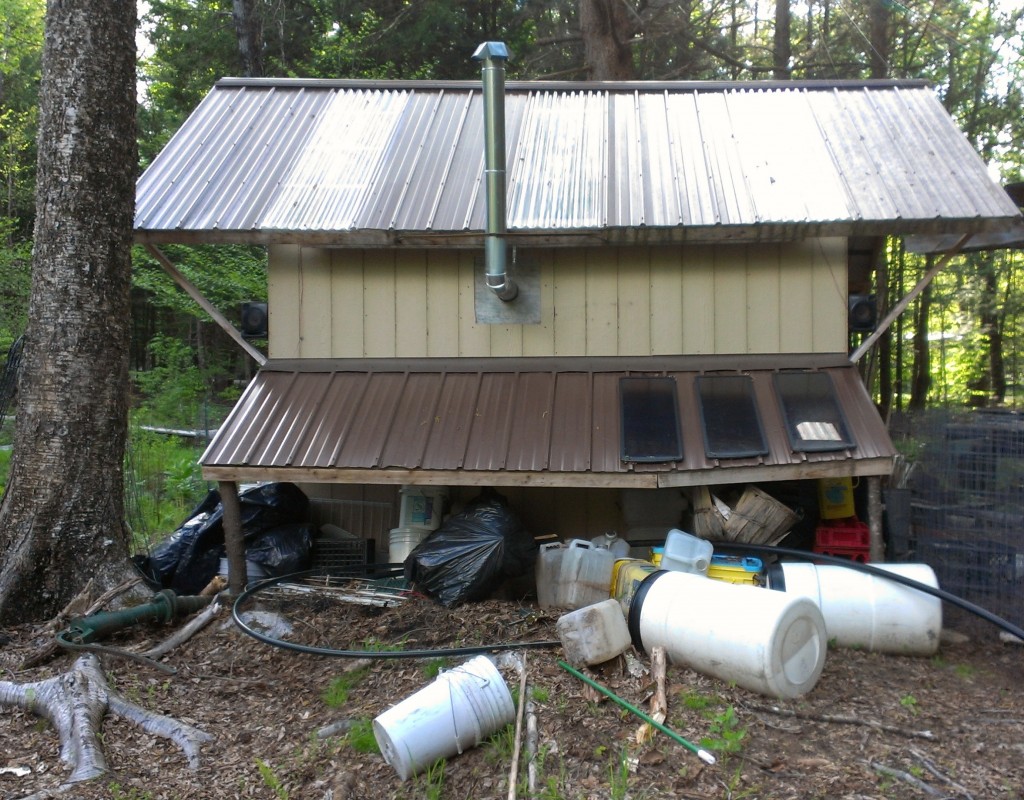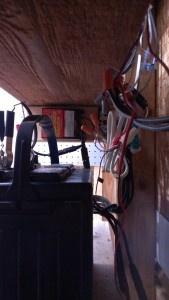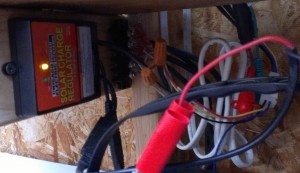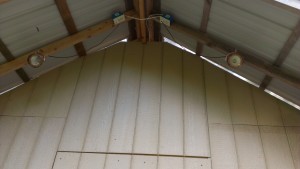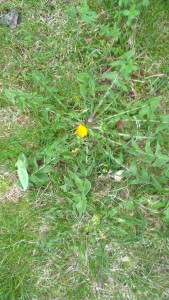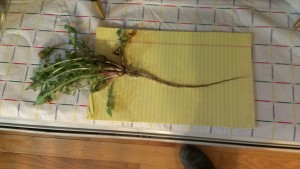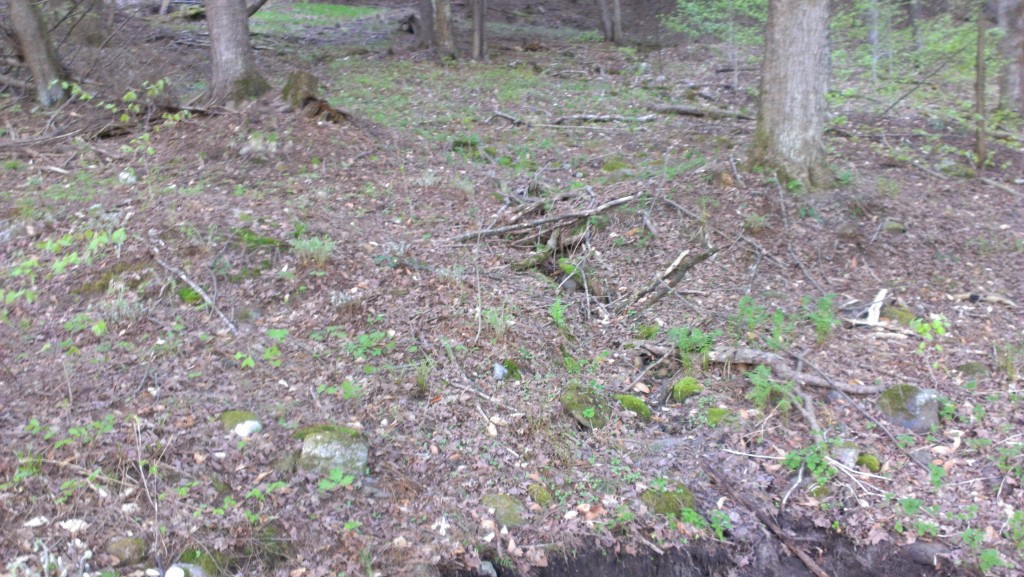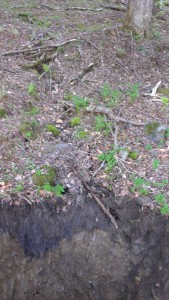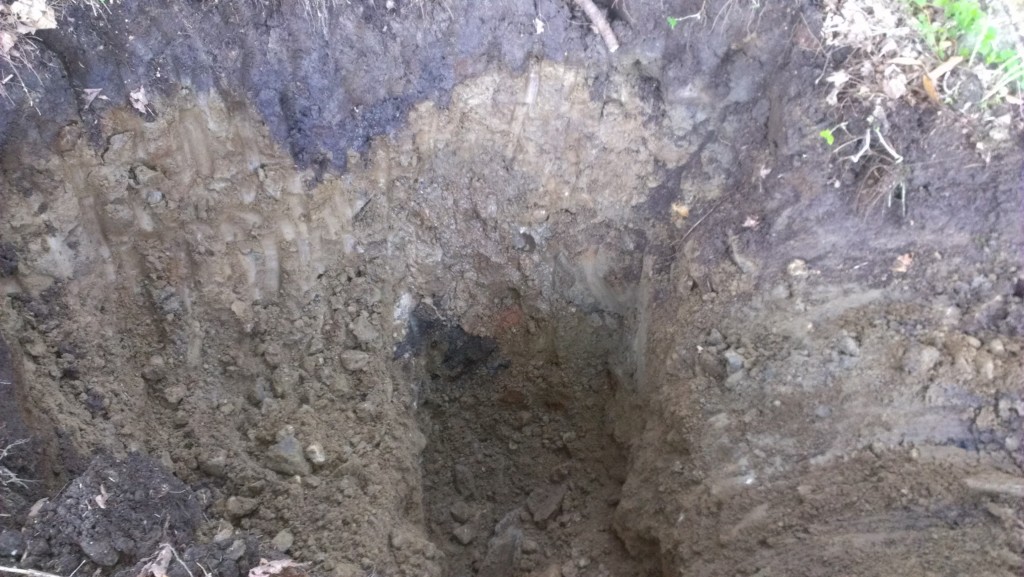I wanted to do a post about the older garden area at the camp, but as I was working on it I was having difficulty with the names of places. This is something I thought about a few years back, but never got around to addressing properly. When you are trying to describe something, it always helps to have a good name for it. None of us in the family are really good at names, but if we use them often enough they will stick. We just have to figure out what to use and agree on it.
So this post will have two purposes. To describe the layout and features of the camp garden (I don’t like that name), the west garden (might not be scalable) or whatever we’re going to call it, and to generate discussion about the names. I could wait, but in the spirit of not trying to get everything right up front, I’m just going to describe it without a proper name. Don’t forget you can click on it to see the full size version.
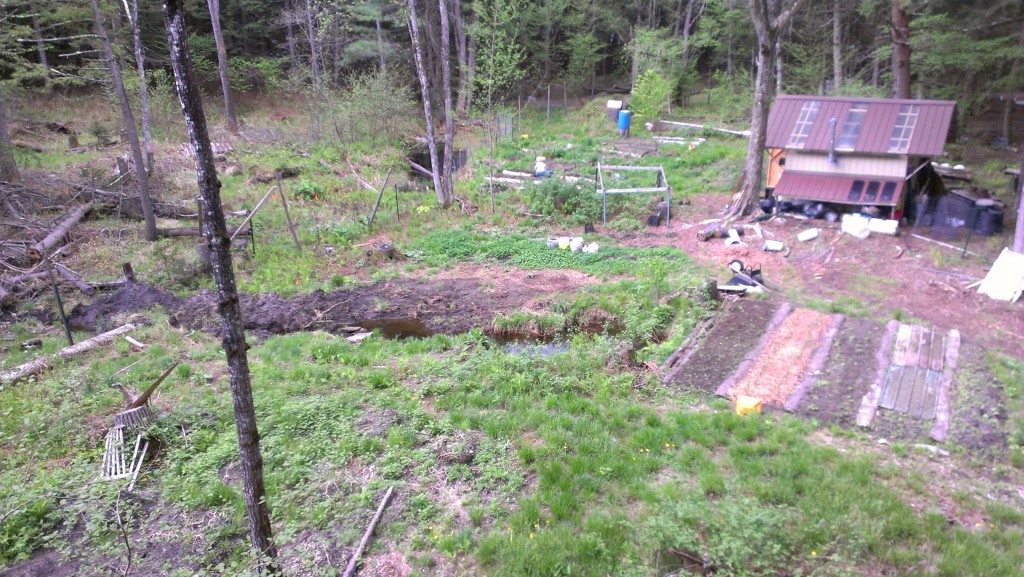
High view of most of the garden.
This picture was taken from way up a ladder against a tree. Why that ladder is there will be a post for another day. The next picture is the same, except that I’ve annotated it with various names.
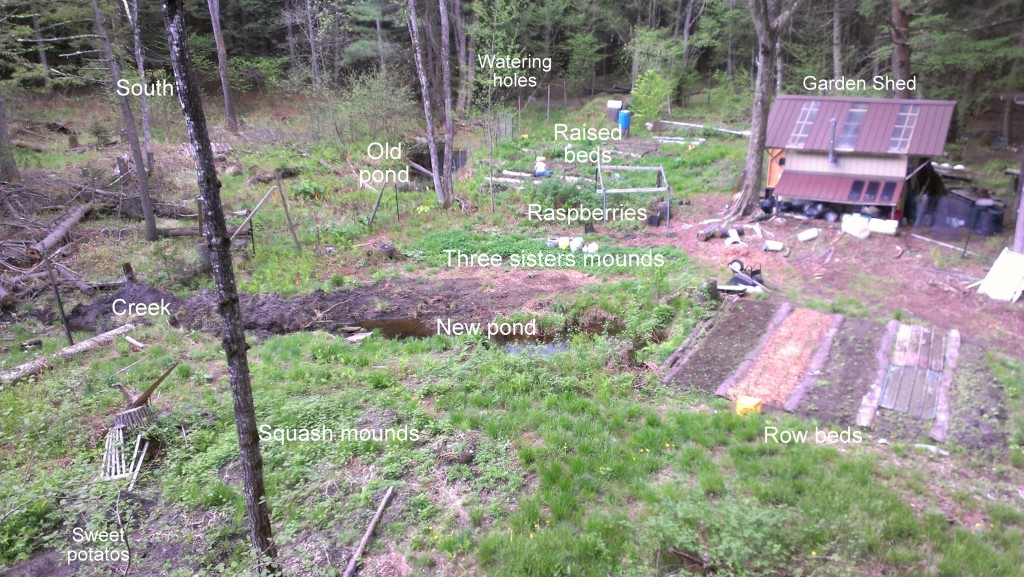
Same picture as above with annotations
Some of those names are OK, as they are descriptions that are unique, such as the raspberries. Others don’t work at all, such as old pond and new pond. What happens when I dig another one?
Initially I was going to describe all the different labelled areas in more detail in this post. However, it is getting late so let me just give an overview today.
All of the garden is surrounded by fencing. It is a mix of four foot metal wire fence and seven foot plastic deer fence. So far that has kept the deer out. The metal fence on the south side is barely standing up as I never went back to redo it after Irene, but it is holding. There are three gates out of the picture that I can open to get the tractor through. For people, the shed is on the fence line and has doors at both ends and there is another people gate by the ‘old pond’.
There is still a lot of area for beds within the existing fence perimeter. Some of that I have held off on building beds because I knew I’d need space to dig the ‘new pond’. Other areas don’t get as much sun and I just haven’t gotten to building beds there yet.
South is to the upper left of the picture as labeled. The garden gets OK sun, but some areas are much better than others due to the forest all around. This location was picked for the proximity to easy water and that there were a few trees down already so I could get started without cutting as many at first.
The things I need names for are the whole garden which can’t just be called garden, because there are going to be gardens at the house as well. I also need to name the ponds a bit better. As labeled there is ‘old pond’, ‘new pond’ and ‘watering holes’ which are a series of little ponds that may eventually be connected. The ‘watering holes’ are under the trees on the west side and can’t be named that, because there will be more of them around as well, such as the new one up the hill from the house.
I could be a geek and just number them, but then I probably couldn’t remember them that well. I was thinking of maybe naming some things for North Shore towns. Any other ideas?


